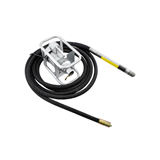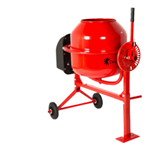Precast concrete is replacing traditional construction methods such as bricks, blocks and steel. Manufactured off-site in a purpose-built factory, precast elements are moulded in reusable moulds and transported to the site, then craned into place.
There are many advantages of precast. One is speed, as the process allows construction to progress faster. Another is its cost-saving benefits.
Sarah Bachmann, from National Precast Concrete Association, says the initial cost of precast can be higher than traditional construction methods, but the cost savings over the life of the project can outweigh the initial higher output.
"Initial design for precast eliminates the need for conversion from traditional construction methods," she said. "There are also cost savings in reduced time spent on-site, reduced site defects, and lower labour costs involved."
Precast concrete is also an effective acoustic insulator, absorbing noise, and therefore reducing noise internally.
"Thermally, concrete is not a good insulation material, although if a designer understands thermal mass theory, then a building can be designed to perform extremely well in most climates, and can result in significant savings in energy use," said Peter Webb of Hanson Precast.
Bachmann says that compared to other materials – such as timber and steel – reactions by precast to changes in outside temperature are slow, thereby reducing peak heating and cooling loads. This delay improves the performance of heating, ventilation and cooling equipment, which in turn saves energy.
"Insulated precast sandwich panels are now also being used widely, and are seen within the building industry as a great thermal solution," she said.
"Sandwich panels provide an instant internal and external wall, which is very durable and robust. There is no need to line panels internally, thereby leaving the internal painted concrete with its high thermal mass exposed."
Another benefit to the environment is that as precast concrete is created in reusable moulds, most waste in the factory is re-used, and on-site waste is virtually non-existent because exact elements are delivered. Recycled materials can also be included in the concrete mix, such as slag, flyash, aggregate, steel and water.
Precast also uses less energy to manufacture than steel frames or glass curtain walls, and unlike other façades, which may need to be treated or cleaned regularly, precast can be left untreated externally. This means long-term maintenance costs are minimal.
According to Webb, "precast is at its best if it has an integral finish, such as a polished or grit blast finish. Colour pigments may also be used. Integral finishes save time on-site and offer a high quality result. Alternatively, painting or staining are also options, applied to off-form precast."
The product is supplied by local manufacturers, which cuts down on transportation and therefore carbon emissions. It also means a quicker delivery time. With a lifespan of 100 years, precast can also be recycled at the end of its life.
According to Bachmann "precast concrete buildings can simply be refitted internally, rather than completely demolished. At the end of their life, precast elements can be crushed and reused as aggregate for road base or construction fill."









